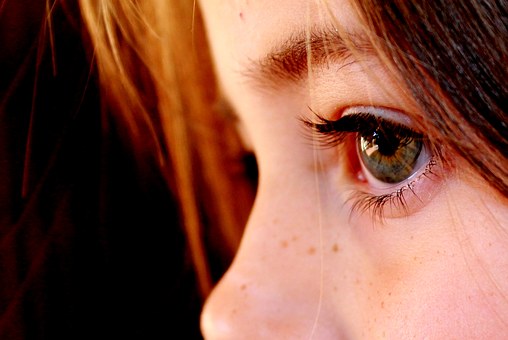 Join SevenPonds each month as Tani Bahti, RN, CT, CHPN, offers practical on-hand guidance to demystify the dying process. As an RN since 1976, Tani has been working to empower families and healthcare professionals to have the best end-of-life experience possible both through education and the development of helpful tools and resources. As the current Director of Pathways, Tani is also the author of “Dying to Know, Straight Talk About Death and Dying,” considered by SevenPonds to be one of the most practical books on the topic. Founder Suzette Sherman says this is, “the book I will have at the bedside of my dying parents some day, hopefully a very long time from now.”
Join SevenPonds each month as Tani Bahti, RN, CT, CHPN, offers practical on-hand guidance to demystify the dying process. As an RN since 1976, Tani has been working to empower families and healthcare professionals to have the best end-of-life experience possible both through education and the development of helpful tools and resources. As the current Director of Pathways, Tani is also the author of “Dying to Know, Straight Talk About Death and Dying,” considered by SevenPonds to be one of the most practical books on the topic. Founder Suzette Sherman says this is, “the book I will have at the bedside of my dying parents some day, hopefully a very long time from now.”

Credit: Pixabay
Only 9 years old, Daniel proudly and perfectly drew up his dying father’s medication in a syringe. In the midst of the helplessness to change the course of his father’s terminal state, this was something he could do to make a difference. He would help his dad feel better.
Because 80 percent of deaths still occur in a hospital or care center, the dying experience becomes less normalized and less inclusive of the entire family. Children are often blocked from visits, even when a loved one is dying at home.
Children pick up on signs of distress in adults. If they do not understand what is happening or are not included in the dying experience, it can increase their own fears or sense of guilt. They may worry that they have done something wrong or that they are somehow responsible for the person’s dying and believe that’s why they can’t see them. They may create a scary picture of what is happening, and the resulting anxiety and distress can result in acting out behaviors such as anger, neediness, destruction or withdrawal.
If you are working with a hospice program, the social worker or bereavement counselor can help you determine the best approach for working with a child, depending on their age, relationship to the person who is dying and other circumstances.
 An abundance of children’s books are available that help normalize the dying process for children — to help them understand the life cycle and acknowledge their sadness. Many are specific to losing a grandparent, a parent or sibling, and most are geared towards specific ages (for instance, toddlers, preschoolers, school-aged children or teens.) When you read these books together, both the parent/reader and child are comforted, and this shared experience can strengthen their connection while minimizing fears. It also gives the child a chance to ask questions that help avoid potentially damaging misinterpretations.
An abundance of children’s books are available that help normalize the dying process for children — to help them understand the life cycle and acknowledge their sadness. Many are specific to losing a grandparent, a parent or sibling, and most are geared towards specific ages (for instance, toddlers, preschoolers, school-aged children or teens.) When you read these books together, both the parent/reader and child are comforted, and this shared experience can strengthen their connection while minimizing fears. It also gives the child a chance to ask questions that help avoid potentially damaging misinterpretations.
Encourage simple expressions of love. This may include drawing a picture of the child’s favorite memory with the person who is dying, or taping the child while they sing a special song. If they are unable to present their gift in person, let them know how much their gift helped the dying person feel good when it was received.
One 5-year-old lovingly rubbed her grandfather’s feet each day, just to listen to his contented and grateful moans. Another would gently brush her mother’s hair while singing to her. They learned the power of connection by providing comfort, and witnessed the natural physical changes that accompany terminal illness.
Children are sometimes able to experience things that adults cannot, and given the chance, their sharing can benefit the adults:
“Oh no! We don’t want her to see her nana. It will upset her. “ The family was at odds with the idea that 3 year old Cecelia should be allowed to visit her beloved grandmother, Irene, who was close to death on the hospice unit. Irene and Cecelia shared a special bond, and the separation was difficult for them. They both repeatedly asked for a visit.
After some discussion with the hospice team, the family agreed, but the tension was palpable as they stood around Irene’s bed as Cecelia approached. The little girl approached the bed slowly, then recognized her nana’s face and squealed as she jumped on the bed to give her a hug.
After a moment, she pulled her head back, looking just above her nana’s head, and began to giggle. Not expecting this reaction, the family asked the little girl why she was laughing. The little girl pointed up and happily explained, “Look at all the angels who are here with nana!”
The family surrounding the bed relaxed, then smiled, then joined in the giggles, grateful for the magic of sharing the experience through the eyes of a child.
Take a look at a copy of Tani’s book “Dying to Know — Straight talk about Death and Dying” to help demystify the process and find words of wisdom on many aspects of dying.

 Including Children in a Loved One’s Dying Experience
Including Children in a Loved One’s Dying Experience


 “Hand to Earth” by Andy Goldsworthy
“Hand to Earth” by Andy Goldsworthy
 Trans Remembrance Project Provides a Community of Grieving
Trans Remembrance Project Provides a Community of Grieving















